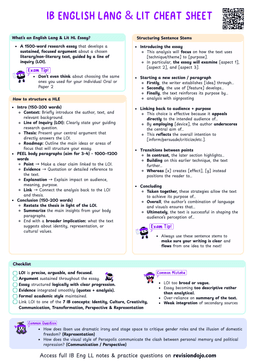Structure in Prose: A Guide for Analysis
- If you want to smash prose analysis, it’s all about looking at how the writer tells the story, not just what they’re saying.
- That means paying attention to their language choices, how the whole thing is structured, and the kind of style or voice they use.

What Counts as Prose?
- Extracts from novels or short stories
- Autobiographical or biographical non-fiction
- Memoirs or personal essays
Core Areas to Focus On
1. Narrative Voice and Point of View
- First-person = intimate, subjective, unreliable?
- Third-person limited = restricted knowledge, creates suspense
- Third-person omniscient = gives broader insight into characters/events
- Shifts in perspective = can mark key turning points or contrasts
Always ask who is telling the story and why it matters.
Example- First-person: The Catcher in the Rye “If you really want to hear about it…” → personal, subjective, and unreliable.
- Third-person limited: Harry Potter “Harry had never believed he would meet a boy he hated more than Dudley” → restricted to Harry’s view.
- Third-person omniscient: Anna Karenina “All happy families are alike…” → narrator knows and tells all.
- Shifting perspective: As I Lay Dying “My mother is a fish.” → changes in narrator reveal emotional and mental contrasts.
2. Characterisation
Look at how the author builds characters through:
- Dialogue
- Description
- Internal thoughts
- Actions and reactions
- What other characters say about them
- How is the character constructed?
- What is revealed about their psychology or motivation?
3. Setting and Atmosphere
- How is the setting described?
- What mood is created through sensory details?
- How does the setting mirror characters’ emotions or themes?


